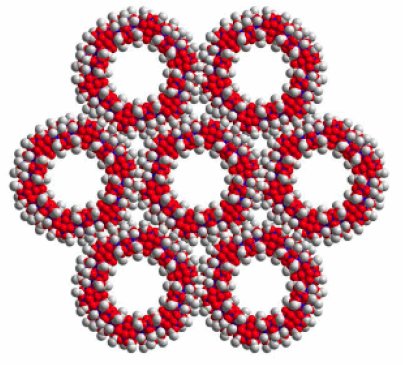
The properties of single molecular magnets (SMM) lie at the interface between classical and quantum mechanics, and as such have attracted the attention of theoreticians interested in the behaviour of nanoparticles. At the nanoscale each molecule functions as a single-domain magnet; below its blocking temperature a SMM exhibits all the macroscopic attributes of a classical magnet, e.g. hysteresis of magnetization, etc, . Due to their small size SMM exhibit also quantum effects such as tunneling of magnetization orientation, quantum interference, etc, all properties required for SMM to function as quantum bits (one bit of information per molecule) in quantum-based computing. If used in storage devices SMM would increase the present day storage density of 3 gigabits /cm2 to 30 trillion bits / cm2, a 1’000’000’000 (!) increase.
To amplify a tad: On the classical side, the essential property of SMM is their magnetic anisotropy. By this we mean that it might be energetically favorable for the magnetic moment of each molecule to align itself along a particular "easy" axis. At temperatures lower than the corresponding anisotropy energy the molecular spin is effectively frozen-in along the easy axis. On the quantum side the most striking phenomenon at the macroscopic level is the experimental observation of regular steps in the magnetic hysteresis loop. This occurs when spin states on opposite sides of the anisotropy barrier have the same energy, allowing the cluster spin to invert direction by resonant quantum tunneling. The practical implication: To function as memory, erasure by quantum tunneling must be suppressed, and this has proven possible for certain compounds such as [Mn4O3Cl4(O2CEt…3)(py)3]2.
The most impressive SMM structure todate is the one of [Mn84O72(O2CMe)78(OMe)24(MeOH)12(H2O)42(OH)6]·xH2O·yCHCl3 (1·xH2O·yCHCl3) [Christou et al., Angew. Chem. Int .Ed (2004)], an illustration of which is the logo of this page.Recently the application of a moderate 1.7 kbar to the cantilevered antiferromagnet 4-NCC6F4CN2S2 led to a doubling of Tc from 35.5K to 70K, the highest temperature ever recorded for a purely organic high-Tc magnet.